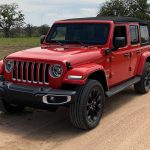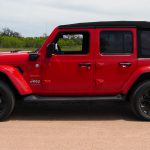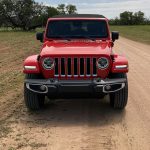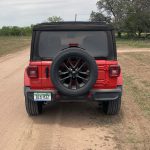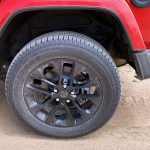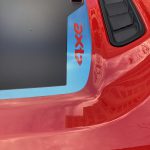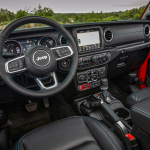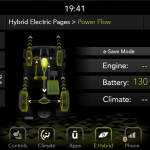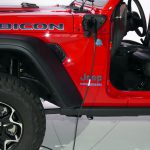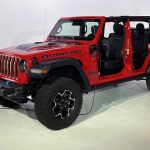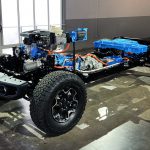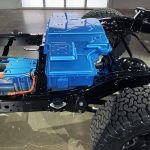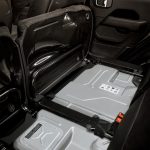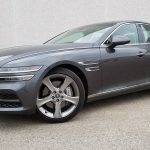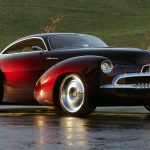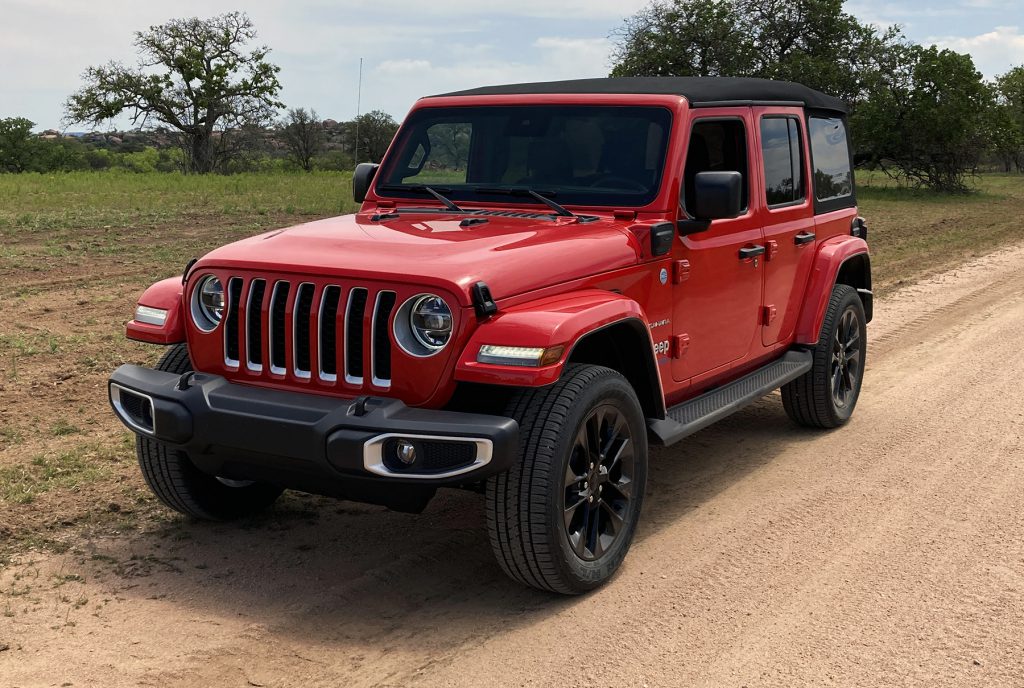
 Jeep has a complicated and fascinating history going back about 80 years, to the battlefields of World War II. Civilian Jeeps, or CJs, were available almost immediately after WWII hostilities ceased, and today’s Wrangler can trace its lineage directly back to that first CJ-2A. Now, for 2021, Wrangler enters a new era with the addition of a plug-in-hybrid variant: the 4xe.
Jeep has a complicated and fascinating history going back about 80 years, to the battlefields of World War II. Civilian Jeeps, or CJs, were available almost immediately after WWII hostilities ceased, and today’s Wrangler can trace its lineage directly back to that first CJ-2A. Now, for 2021, Wrangler enters a new era with the addition of a plug-in-hybrid variant: the 4xe.
The 4xe is built on the platform of the current-generation Wrangler, which debuted as a 2018 model and has proliferated by adding a Gladiator pickup version for 2019, EcoDiesel-powered models for 2020, and 470-hp Hemi-V8-powered Rubicon 392 models for 2021. The 4xe launches in two trim levels: Sahara (MSRP: $47,995) and Rubicon ($51,695). A topline High Altitude model ($53,815) is slated to debut a bit later in the model year. All three trims are offered only in 4-door Wrangler Unlimited form. The destination fee adds $1495, and the 4xe is eligible for a $7500 federal tax credit, as well as other eligible state and local credits and incentives.

Compared to the regular gas-powered Wrangler Sahara, the Sahara 4xe adds several items to the standard equipment list. These include Dana 44 HD wide axles, Selec-Trac full-time 4-wheel drive with 2.72:1 low-range gearing, 20-inch wheels, leather-trimmed bucket seats, LED exterior lights, Uconnect 4C navigation system with an 8.4-inch display, and a 9-speaker Alpine-brand audio system. The Rubicon 4xe adds Rock-Trac heavy-duty full-time 4WD with 4:1 low-range gearing, 17-inch wheels, and the same LED lighting, stereo, and navigation upgrades as the Sahara 4xe. The High Altitude receives unique interior and exterior appearance touches, and its running gear is like the Sahara’s, with Selec-Trac 4WD and 20-inch wheels. All 4xe models get blue exterior-trim accents, but on the Rubicon the accents are more extensive and extend to blue contrast stitching in the interior.
First Spin: 2020 Jeep Gladiator
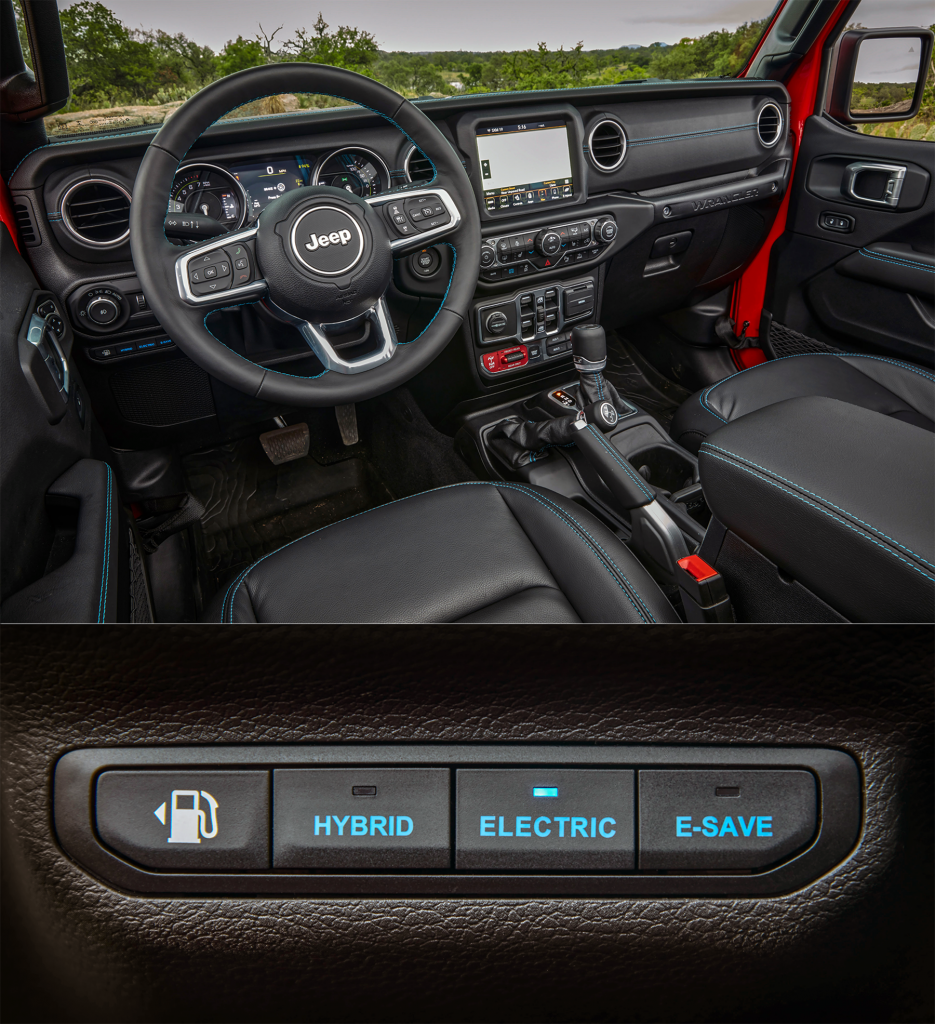
The 4xe’s gasoline engine is a 2.0-liter turbocharged 4-cylinder, and it’s largely unchanged from the unit that’s been optional in recent Wranglers. For duty in the 4xe, the traditional electric starter and alternator are replaced by a front-mounted motor/generator unit that handles the engine’s start/stop feature via a belt running to the engine crankshaft.
Test Drive: Land Rover Range Rover Sport Plug-in Hybrid
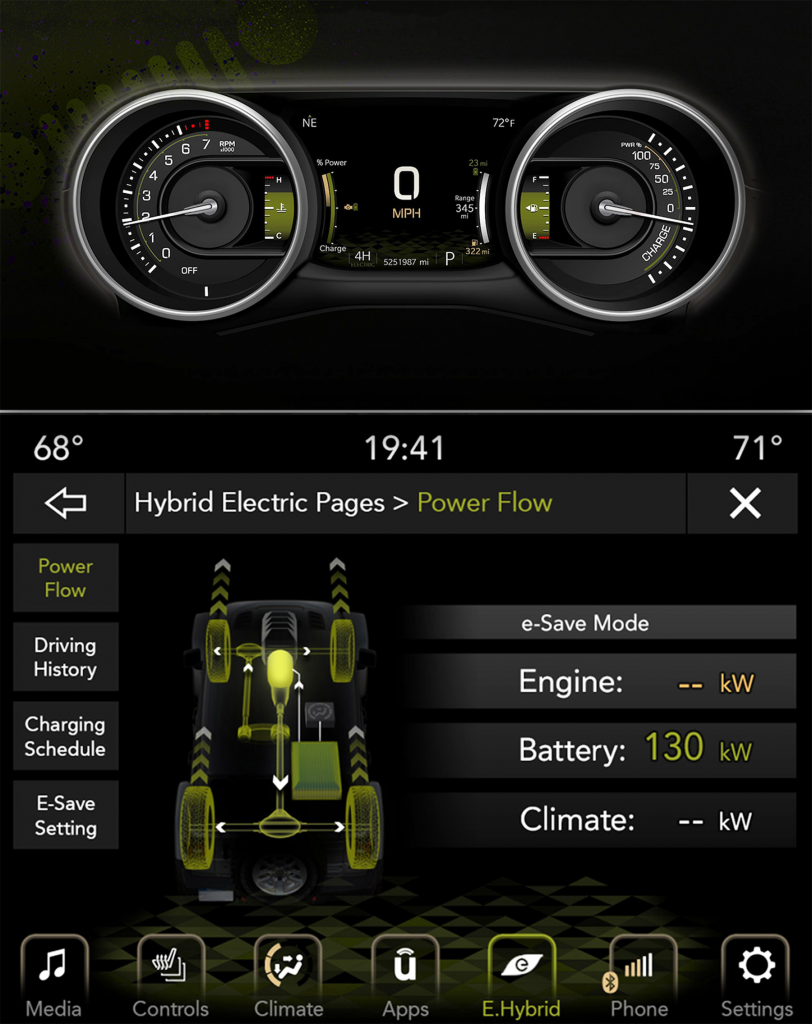
The transmission is a 4xe-specific variant of the 8-speed TorqueFlite automatic used in most Wranglers. Here, the conventional torque convertor is replaced with a large electric motor and two clutches. The front clutch can completely disengage the gas 4-cylinder from the electric motor for electric-only operation. The second clutch is behind the electric motor, and it controls engagement with the transmission.
The 2.0-liter turbo is rated at 270 horsepower and 295 lb-ft of torque. The electric motor that’s integrated with the transmission delivers 134 horsepower and 181 lb-ft of torque. Combined output is 375 horsepower and 470 lb-ft of torque. Jeep says that peak powertrain output is available at all times, regardless of the battery pack’s state of charge. For comparison, the previous Wrangler torque champ—the 3.0-liter EcoDiesel engine—is rated at 260 horsepower and 442 lb-ft of torque. The new-for-2021 Wrangler Rubicon 392 runs a 6.4-liter Hemi V8 rated at 470 horsepower and 470 lb-ft of torque. So, we’re pleasantly surprised that the 4xe matches the muscular 392 when it comes to torque.
The 4xe’s battery pack is a 400-volt 17-kWh unit that contains 96 lithium-ion cells that use NMC (nickel manganese cobalt) graphite chemistry. The pack has its own automatic heating/cooling system and is mounted inside an aluminum housing in the interior, underneath a 4xe-specific rear seat. Jeep says all components of the hybrid system are sealed and waterproof, so the 4xe can ford water that’s approximately 30 inches deep—just like other Wranglers.
The battery pack’s charging port is located on the driver’s-side front cowl, just forward of the windshield. Level 1 charging using standard household 120V service takes approximately 12.5 hours; Level 2 charging with 240V service takes about 2.5 hours. LED battery-charge indicators near the charging port and atop the dashboard help keep tabs on battery status while the vehicle is charging.
4xe’s hybrid system is dubbed E Selec, and it has three selectable drive modes: Hybrid, Electric, and eSave. In Hybrid mode (the default setting), the system blends torque from the gas engine and the electric motor. Energy from the battery pack is used first, with the gas engine kicking in once battery power is depleted.
Quick Spin: 2021 Jeep Gladiator Overland Diesel
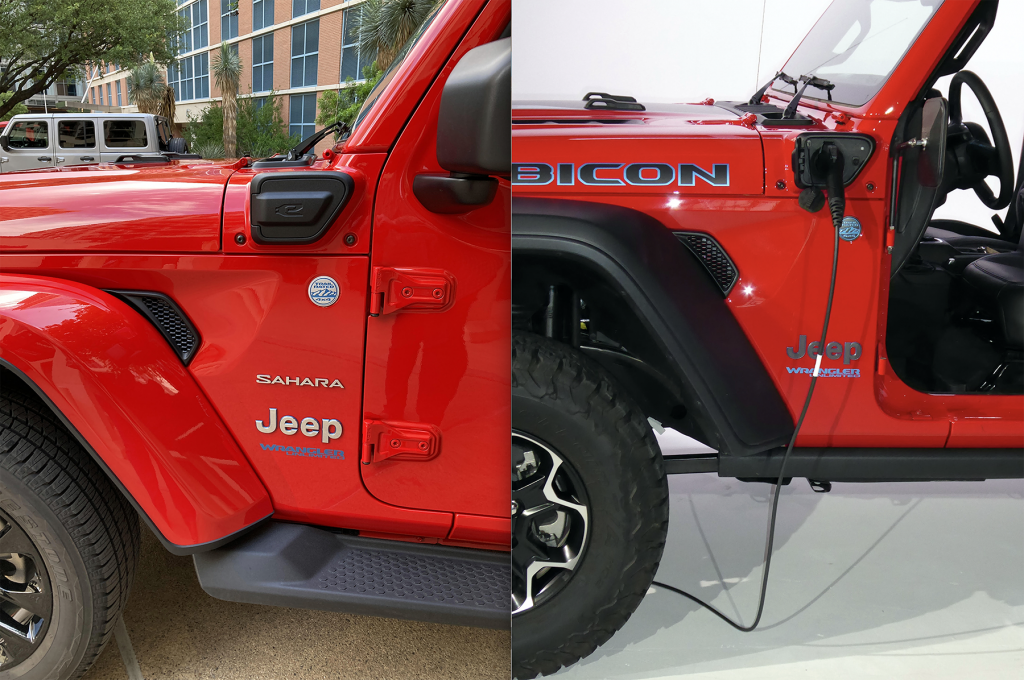
As its name implies, Electric mode operates only on battery power until the battery is depleted. However, if the driver aggressively applies the throttle pedal, the gas engine will kick in. The EPA estimates that a fully charged Wrangler 4xe can go 21 miles solely on electric power. Jeep says that, because of the nature of off-road driving, a fully charged 4xe can run on electric power for 3 to 4 hours on an off-road trail in Electric mode.
Quick Spin: 2020 Jeep Wrangler Unlimited EcoDiesel
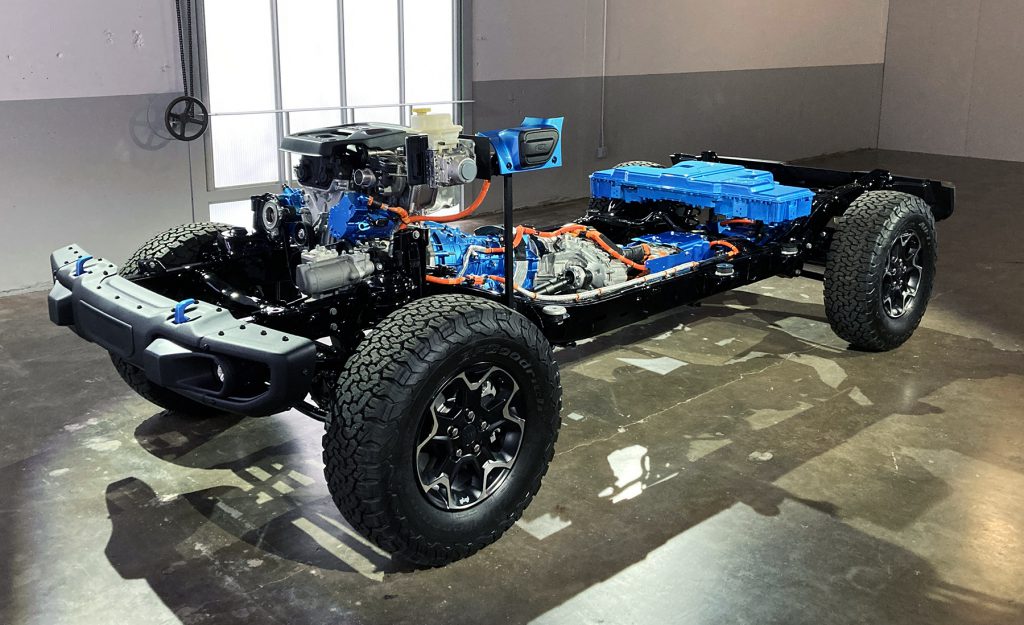
In eSave mode, the gas engine is prioritized, so the electric power can be conserved for use later. Owners might want to use this mode to save battery charge for planned electric-only off-roading, or for entering areas that restrict the use of gasoline-powered vehicles. This mode offers the choice of Battery Save or Battery Charge modes via a menu accessible through the Uconnect screen. As is typical for gas/electric hybrids, the 4xe uses regenerative braking to help generate electric power to recharge the battery pack, and also includes a more-aggressive, driver-selectable “Max Regen” setting.
Test Drive: 2021 Mini Cooper SE Countryman ALL4 PHEV
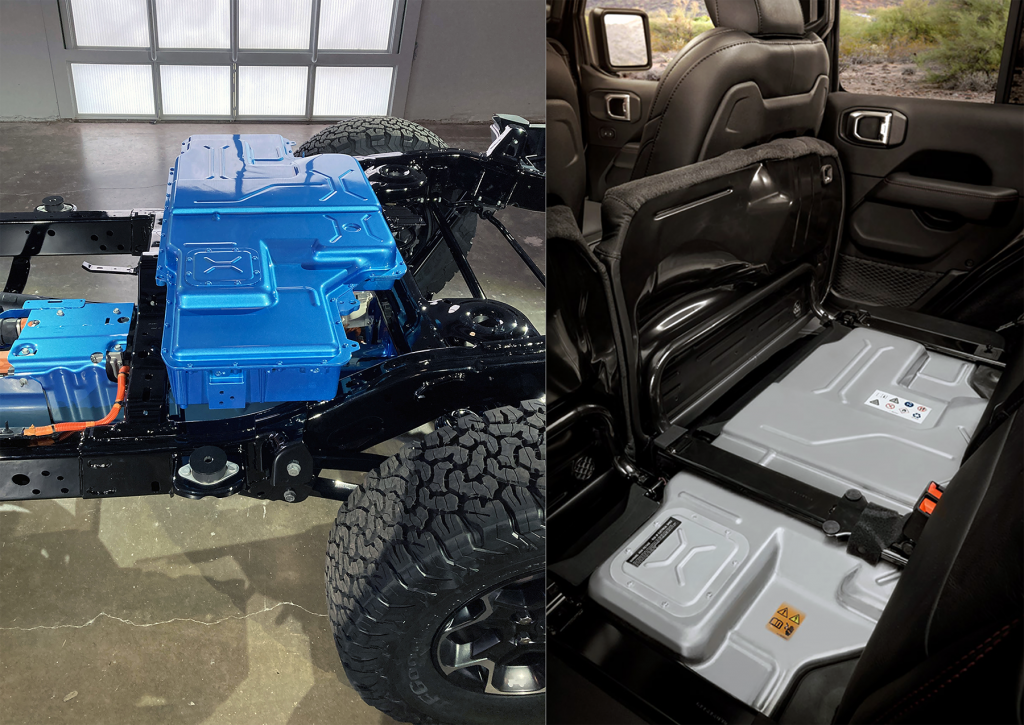
At the 4xe’s press-preview drive event in Austin, Texas, we got behind the wheel of both the Sahara and Rubicon 4xe models. In city and highway driving, the Sahara’s throttle response is excellent, and acceleration is completely adequate for daily commuting. When driving in Electric mode with Max Regen braking activated, we managed 22.9 electric-only miles (beating the EPA estimate by nearly 2 miles) before the battery depleted, and then the gas engine and Hybrid mode engaged automatically. The gas engine itself is very smooth and nearly silent at modest throttle, and the start/stop feature works unobtrusively. When underway in Hybrid mode, the gas engine transitions on and off seamlessly. More-aggressive use of the throttle brings the powertrain alive, and it’s as peppy as you’d expect for something with 375 horsepower. The TorqueFlite automatic is commendably smooth as well; during our drive the transmission never seemed to be caught in the wrong gear.
Test Drive: 2021 Ford F-150 PowerBoost Hybrid
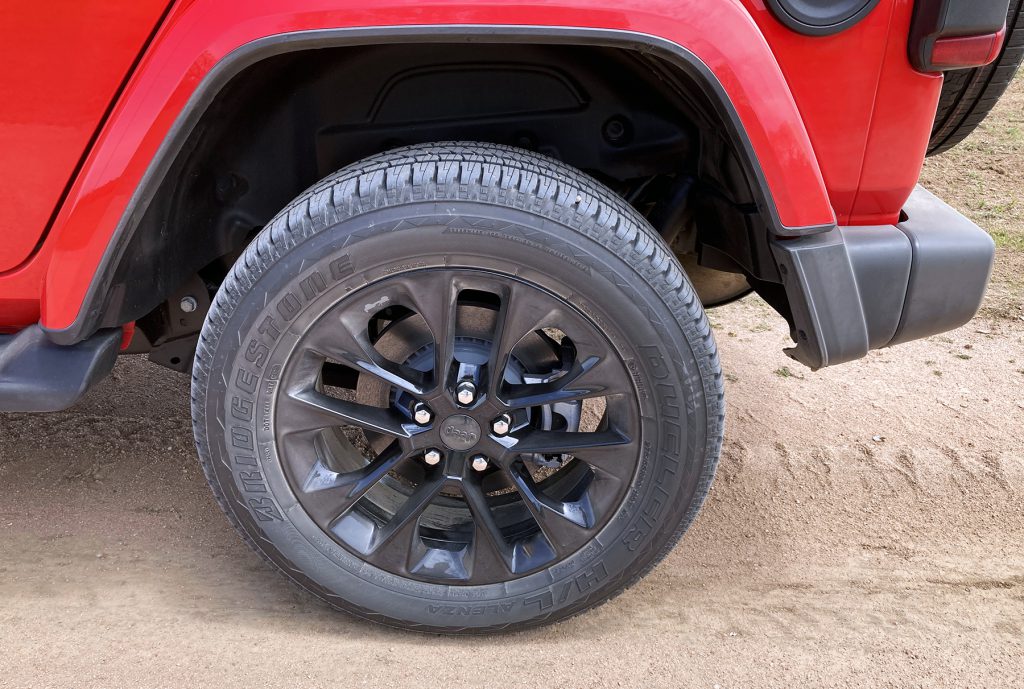
With the Max Regen regenerative-braking setting off, the brake-pedal feel is very natural. With Max Regen on, regenerative braking is quite dramatic upon lifting off the throttle pedal, and the need to apply the brake pedal is greatly diminished. The choice here is likely personal (and we appreciated having the choice), but we quickly acclimated to Max Regen.
On the road, the Wrangler 4xe exhibited no unexpected quirks. Ride quality was comfortable on the central Texas roads of our drive route, and the road noise from the 20-inch Bridgestone all-season tires was reasonably well controlled (expect more racket from the Rubicon’s knobby all-terrain tires). Some wind rush is audible through the soft top, but it wasn’t bothersome. Sure, Wrangler isn’t as refined or quiet as the best crossover SUVs, but that gap isn’t as big as it used to be—we think many shoppers will find the Wrangler perfectly livable day-to-day.
The basic Wrangler’s upright layout means its driving position is fairly unique. It takes a little while to get used to being so close to the windshield, and we really wish the driver’s seat would go back a bit further. This 6’2” tester had adequate legroom, but would have liked more room to stretch during longish stints behind the wheel. Head and elbow room is generous, but the seat back was a little harder than we would have liked, and the seat feels like you’re sitting on it rather than in it. Outward visibility is ok to the front and sides, but only so-so to the rear—the rear-mount spare tire and the central brake light above it block a good chunk of the view astern.
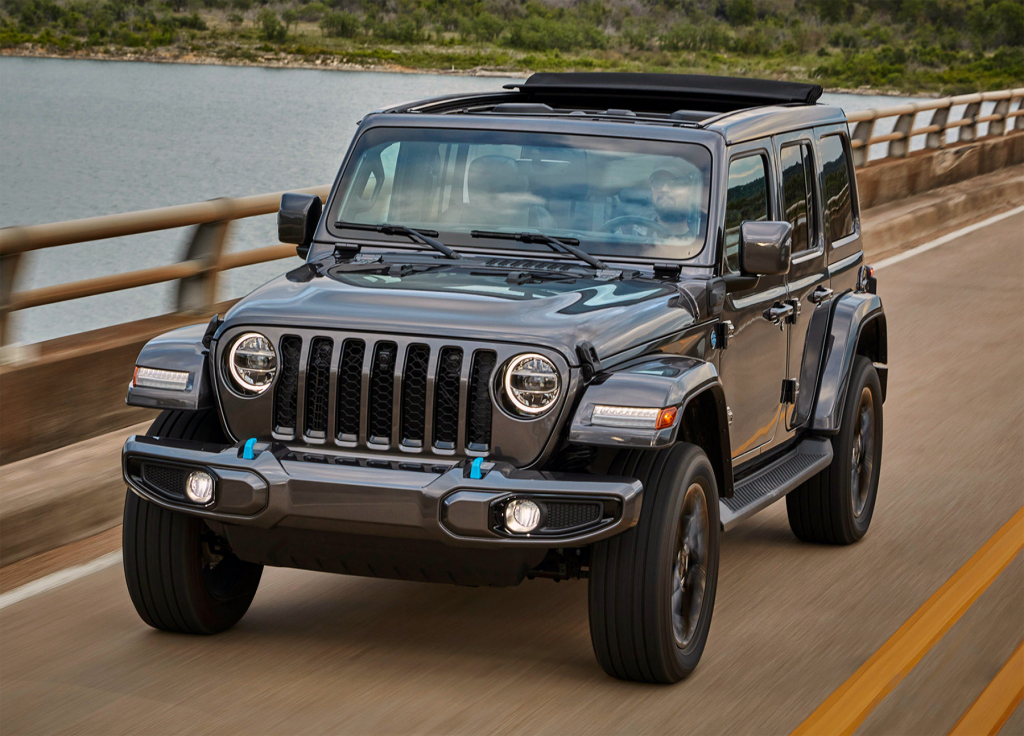
The everyday on-road driving experience is obviously important, but any Jeep Wrangler is also about off-road capability. Our drive took us northwest of Austin to a rock-strewn ranch outside of Llano, Texas, where Jeep had prepared an off-road course. There, we switched into a Rubicon 4xe set in Electric mode. In addition, the Rock-Trac 4WD system was placed in 4LO, and the tires were partially deflated. The off-road route took us through standing water about 30 inches deep, some short sections of trail, and up and down a few rock formations. With instructions from Jeep Jamboree guides, at different times we activated the rear locking differential alone or in combination with the front locker. We also sampled Selec-Speed Control, a handy off-road cruise-control feature which incorporates hill-ascent and hill-descent control. Selec-Speed Control enables the driver to set the vehicle’s speed in 0.8-mile-per-hour increments by using the transmission shift lever in the manual gate.
The most challenging section of the off-road course took us up a large rock formation that was inclined at approximately 45 degrees. This was approached with both lockers activated. Once we reached the top, the guides helped us get the Jeep repositioned to descend the formation via a section with an angle of decline of about 50 degrees. This was all accomplished with little drama beyond some scraping of the Rubicon’s standard skid plates on the rock’s face. In electric-only mode, torque is available immediately, and there is no worrying about getting the engine up to speed to make the power you need to get up an incline. We’ve done enough off-road driving at similar preview events to appreciate that the 4xe’s Electric mode can make off-roading a bit easier to navigate and less stressful, especially for casual enthusiasts. Another benefit: With the gas engine off you can better hear the nature around you, and also more easily listen to any guides helping you make your way along the trail.
Test Drive: 2021 Toyota RAV4 Prime SE
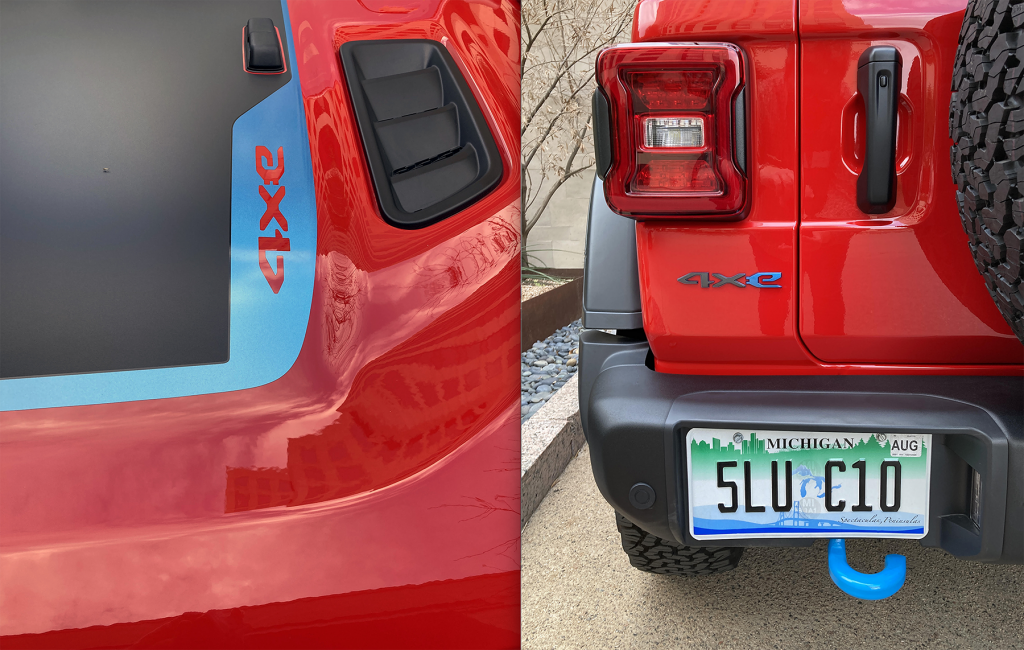
Excellent fuel economy is typically a given with plug-in hybrids, but the 4xe has a lot working against it here, as the realities of a 5100-lb-plus curb weight, big grippy tires, and aerodynamics only slightly sleeker than those of a really tall brick come into play. Using only gasoline, the 4xe’s EPA-estimated combined city/highway fuel economy is 20 mpg—not impressive at all for a hybrid. In fact, this number is surpassed by the majority of Wrangler variants, with the EcoDiesel topping the lineup at 25 mpg combined. Even the non-plug-in Wrangler Unlimited with the 2.0 turbo and 8-speed automatic gets a combined rating of 22 mpg. So, strictly on the metric of gas-only fuel economy, the 4xe is no great breakthrough—it’s actually a bit disappointing.
So, what’s going on here? We’d wager that the 4xe’s added weight is the main culprit. Remember the heavy-duty Dana axles, the battery pack with heating and cooling, and all the other goodies we talked about? All that stuff weighs something, and it adds up fast. According to Jeep’s official specifications, a regular Wrangler Sahara with the 2.0-liter 4-cylinder and 8-speed automatic has a curb weight of 4406 pounds—nearly 700 pounds lighter than a base Sahara 4xe.
First Look: 2022 Jeep Wagoneer and Grand Wagoneer
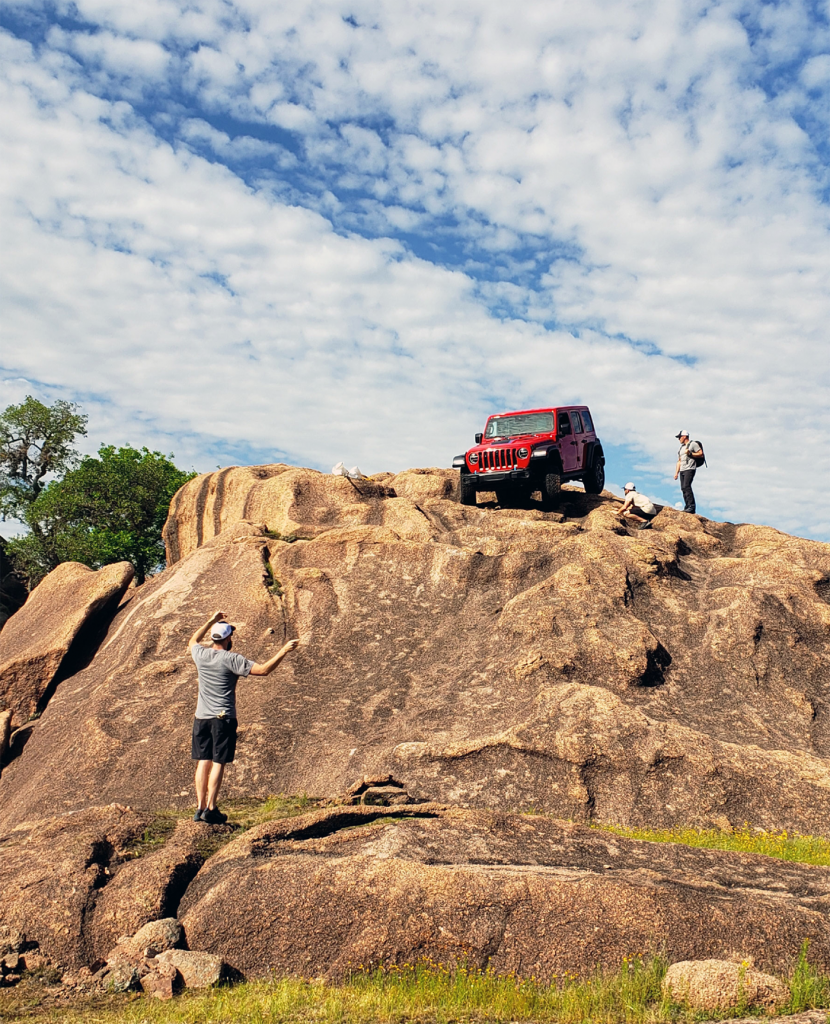
When using both gas and electric power, the picture improves—combined city/highway economy is an estimated 49 MPGe. And, don’t forget the 21-mile all-electric range. If your daily commute is 20 miles or less and you have easy access to Level 2 charging—and you’re diligent about plugging in—your gas-station fill-ups could be few and far between. The bottom line is that your results and experience could vary widely when it comes to the 4xe’s fuel economy (or relative lack thereof). We’re anxious to get a Wrangler 4xe through our fleet at our Chicagoland headquarters for fuel-economy testing.
Our press-event Sahara 4xe tester had a base price of $49,490 with destination. It was further outfitted with Firecracker Red paint ($245), Cold Weather Group ($995), rear park assist ($995), remote proximity keyless entry ($645), “premium” Sunrider soft top ($595), Cargo Group ($195), and a storage bag for the soft-top windows ($75). Add in the $795 Advanced Safety Group, which includes automatic high-beam control, forward collision warning, adaptive cruise control, and brake assist, and the total as-tested price was $54,030.
It’s a bit complicated to compare 4xe pricing to a non-plug-in-hybrid Wrangler in the same trim level because equipment levels differ somewhat. To get an idea of the 4xe’s price premium, we used the Jeep website’s build tool to option up a base Wrangler Unlimited Sahara (base MRSP: $38,925) as close to the base 4xe as we could, which raised the price to $45,650 before destination. Then we added more options to match those on our test Sahara 4xe, which brought the total with destination to $52,705. So, the 4xe we drove was roughly $1325 more than a similarly equipped Unlimited Sahara with the 2.0-liter gas turbo and 8-speed automatic. And remember, these prices are before the 4xe’s potential $7500 federal tax credit and other credits for which you might qualify. The tax credit obviously makes 4xe more compelling, but realistically this math really only works if you’re already looking near the top of the Wrangler lineup.
Thus far, Jeep representatives are tight-lipped about any plans for a 4xe version of the 2-door Wrangler or the Wrangler-based Gladiator pickup. Jeep is selling plug-in-hybrid 4xe versions of the Compass and pint-sized Renegade in Europe, but those two aren’t available here in the States. However, Jeep has said they will offer a 4xe version of the next-generation Grand Cherokee, which enters production later this year, and the cover of the 2021 Wrangler 4xe brochure proclaims it to be “The first of many plug-in hybrids in the U.S. from the Jeep brand.”
In previous reviews, we’ve mentioned that Jeep Wranglers aren’t known for bargain pricing, and that’s certainly still the case here. Still, a price premium of less than $1500 for a plug-in-hybrid powertrain is reasonable, and overall we are quite impressed with the hybrid operation of the 4xe. The approximately 20 miles of electric-only range can significantly reduce the need for gas for some customers, and of course the gas engine enables long trips like any other traditional Wrangler… even if the fuel economy is nothing to write home about. The hybrid powertrain is very well behaved, and 375 horsepower from what’s essentially a 2.0-liter turbo four would have been unimaginable in the not-so-distant past. And, perhaps most importantly, all of Wrangler’s off-road strengths remain intact in the 4xe. Our gut tells us almost any Wrangler purchase is made more with the heart than the head, and we’re guessing that calculation remains intact for 4xe as well.
4WD Madness! 10 Classic Jeep Ads

Check out the Consumer Guide Car Stuff Podcast
2021 Jeep Wrangler Unlimited 4xe Gallery
(Click below for enlarged images)
2021 Jeep Wrangler Unlimited 4xe
2021 Jeep Wrangler Unlimited 4xe


